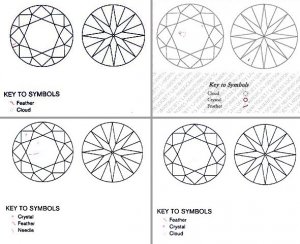Does anybody have any information on feathers as an inclusion? I’ve read that they are basically cracks in the stone in the direction of the natural cleavage. As such, my concern is that can they weaken the integrity of the stone. Make it more brittle or something? My gemologist said that if GIA has serious concerns about feathers then the stone is automatically as an I1 or lower. Anybody know about this. The stone I bought has three small feathers. It’s an SI1…








300x240.png)